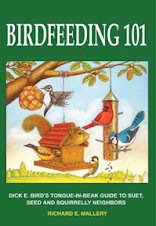
•Precocial birds like chickens, ostriches, ducks, and seagulls hatch ready to move around. They come from eggs with bigger yolks than altricial birds like owls, woodpeckers, and most small songbirds that need a lot of care from parents in order to survive.
•Air sacs may make up 1/5 of the body volume of a bird.
•A bird’s heart beats 400 times per minute while resting and up to 1000 beats per minute while flying.
•The most yolks ever found in a single chicken’s egg is nine.
• The homing pigeon, Cher Ami, lost an eye and a leg while carrying a message in World War I. Cher Ami won the Distinguished Service Cross. Its leg was replaced with a wooden leg.
• The American turkey vulture helps human engineers detect cracked or broken underground fuel pipes. The leaking fuel smells like vulture food (they eat carrion), and the clustered birds show repair people where the lines need fixing.
• If the great horned owl were to be totally stripped of its feathers, the naked bird would weigh less than its feathers.
• A pair of nesting barn owls is capable of catching and eating nearly 3,000 rats a year.
Hummingbirds eat about every ten minutes, slurping down twice their body weight in nectar every day.
• Coffee grown in the shade of tree canopies, rather than on land cleared of other vegetation, provides a habitat for a number of species, including migratory birds such as various species of warblers, vireos, orioles, grosbeaks, hummingbirds, tanagers, and many more. In addition to birds, shade coffee plantations provide habitat for orchids, insects, mammals (such as bats), reptiles, and amphibians.
• If an average man had a metabolism comparable to that of a hummingbird he would have to eat 285 pounds of hamburger every day to maintain his weight.
• The bones of a pigeon weigh less than its feathers.
• The pouch of a pelican has a capacity to carry 12 quarts.
• Hummingbirds lay only 2 eggs per clutch.
• An albatross is able to sleep and fly at the same time.
• The bones of most birds are hollow and filled with air.
• The nest of a bald eagle can be 12 feet deep, 10 feet wide and weigh over a ton.
• With few exceptions, birds do not sing when they are on the ground. They only sing when standing on objects off of the ground or while flying.
• The total number of birds on the planet is very difficult to estimate because they won't sit still, but scientists have suggested that there may be between 100,000 and 200,000 million adult or near adult birds on the planet at any one time.
• Since the 1600s at least 115 species of birds are known to have gone extinct, mostly as a result of human interference of one sort or another.
• The title of "Bird with the Longest Wings" also has several close contenders with the Andean Condor (Vultur gryphus) with a well recorded wingspan of (10 ft).
• The number of bird species recorded in the continental U.S. and Canada is over 900.
• James Bond was a birder: Ian Fleming named this famous character after the real-life ornithologist and author of Birds of the West Indies.
• A nickel weighs more than a hummingbird.
• Goldfinches like thistle seeds, hulled sunflower seeds, and oil-type sunflower seeds.
• The most frequently seen birds at feeders across North America last winter were the Dark-eyed Junco, House Finch and American goldfinch, along with downy woodpeckers, blue jays, mourning doves, black-capped chickadees, house sparrows, northern cardinals and european starlings.
• Fall migration allows birds to move to a different location so that they will continue to be able to find food. In the spring they return to the places where they will breed and raise their young. It may be the slant of the sun's rays, hormonal changes, the change of the weather or other factors that contribute to the birds' urge to migrate to their other home.
• Birds are always in the business of finding food and eating. Birds burn energy very quickly – in fact, the smaller the bird, the faster they burn it. Thus smaller birds need to eat much more often.
• Some birds learn that it pays to get help from others. If you live near farmland, look for Cattle Egrets near grazing cattle who will gobble up multitudes of insects stirred up by the cows. Other birds will eat off insects from other animals, such as deer who are relieved to be rid of the bugs.
• Male swans are known as "cobs", females as "pens", and baby swans are called "cygnets".
• If a swan can have a swan song, does that mean a cygnet can have a signature tune?
• The title for the highest speed for which any bird has been reliably clocked goes to the Peregrine Falcon. In a 45 degree dive during a territorial display one bird was recorded at 217 MPH!
• Highest Flying Bird.....A Ruppell's vulture collided with a commercial aircraft over the Ivory Coast at an altitude of 37,000 feet! The plane was damaged but managed to land safely. The vulture didn't make it. Feather remains were used to make a positive ID.
• Hummingbirds can fly forward, backward, shift sideways and stop in mid-air and lap nectar with their tongues at the same time.
• The "Muscovy Duck" is now a familiar bird in farmyards and parks in many areas of the world, however, it originally came from the rainforests of Central and South America.
• A male goose is known as a "gander", female as a "goose", and a baby is called a "goosling
• Whooper, Trumpeter and Mute swans are among the heaviest flying birds...weighing up to 35 pounds!
• Feathers are made of the same substance, Keratin, that makes our nails and hair, and are kept waterproof by the bird with oil from a gland under the tail.
• South America alone is home to 2,500 species of birds, and is often called (by bird-lovers) the Bird Continent. The runner-up is Africa; where about 1,750 species live in the region south of the Sahara Desert. North America has about 950 different species of birds.
• In winter, the ptarmigan (the state bird of Alaska) grows special feathers on the tops and bottoms of its feet. These work like snowshoes, allowing the bird to walk across the surface of soft snow.
• In medieval times, it was believed that the feet of the great horned owl, burned with herbs, would protect people from poisonous serpents.
EAGLE-EYED
Eagles are able to eyeball prey on the ground even in flight or from a high perch, hence the term “eagle-eyed.” These large birds, with wingspans that can exceed 7 feet, belong to a group known as “raptors.” From the Latin meaning “one who seizes,” a raptor is a bird that captures its prey with strong feet and sharp talons. Fifty-nine species of eagles can be found on every continent but Antarctica, and are divided into four major groups: fish-eating eagles, booted eagles, snake-eating eagles, and giant forest eagles. Two species inhabit the United States—the golden eagle, which is a booted eagle, and the bald eagle, which is a fish-eating eagle. The bald eagle was chosen as the national symbol of the United States in 1782. At that time, nearly 100,000 of these majestic birds resided in the continental United States. By the early 1960s, fewer than 1,000 remained. Despite the respect it commands, the bald eagle has been endangered due to habitat loss, poisoning from pesticides, and hunting or capture by humans. However, thanks to recovery efforts by the U.S. government, conservation organizations and others, the bald eagle is making a comeback.

